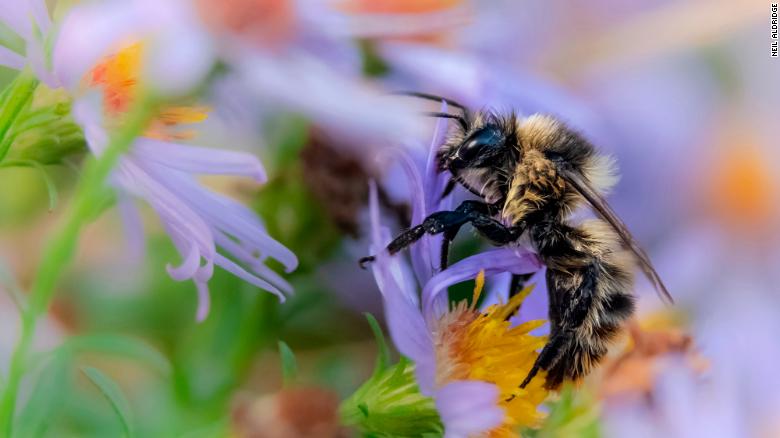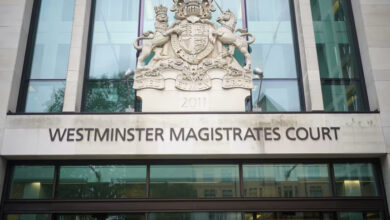
(CNN) – Imagine traveling vast distances through a barren wilderness without access to food or water. That’s the challenging reality facing many flying insects in the UK.
The country’s insect populations are in drastic decline. The results of a recent survey conducted by conservation group Buglife and the Kent Wildlife Trust found that numbers of flying insects in the UK have fallen by nearly 60% in the last 17 years. Approximately 20 bee and wasp species have gone extinct in the last 100 years and half of UK butterfly species are now threatened, according to the charity Butterfly Conservation.
Globally, up to 10% of all insect species are threatened with extinction. The devastation is linked to multiple factors, including climate change and the use of pesticides, while huge areas of key habitats have been lost to intensive agriculture and other development, says Jamie Robins, programmes manager at Buglife.
Since the 1930s, the UK has lost 97% of its wildflower meadows. This not only affects pollinating insects but also animals that feed on insects, such as birds, hedgehogs and bats.
“Although our countryside looks green and beautiful and vibrant, if there aren’t many flowers it’s quite a hostile environment for our insects to move across easily,” says Kate Jones, a conservation officer at Buglife.
“Stepping stones”
So far, B-lines has restored just over 2,500 hectares of wildflower-rich grasslands in the network. But it is only a small percentage of the targeted 150,000 hectares and restoring wildflowers can be difficult. Claire Carvell, a senior ecologist at the UK Centre for Ecology and Hydrology, says native wildflowers tend to struggle to establish in areas of rich and fertile farmland, and pollinators often need a diverse range of flowers across all seasons.
Another key challenge is that the network winds through public and private land in both urban areas and the countryside — so the project has enlisted the help of wildlife trusts, local authorities and farmers and estate owners.
Buglife is providing farmers and landowners with guidance to grow wildflower-rich grasslands, alongside a 10-year maintenance plan. “They’re the ones who can really make a difference. They can give up small areas of their land to wildflowers and restore the habitat that they have,” says Robins.
Separately, the UK Department for Environment, Food and Rural Affairs is incentivizing landowners and farmers to restore habitats by funding the planting and management of wildflowers through the recent Environmental Land Management Scheme.
Carvell believes the B-lines initiative is providing effective support and training to farmers and councils for the restoration process and is an important addition to government-led incentives.
She adds that planting wildflower-rich hedgerows and grasslands not only helps insects, but also farmers. “We have plenty of evidence that farmers are benefiting from managing their land in a way that’s positive for bees, for flies and also all the predatory insects or the insects that are providing almost a natural pest control service to their crops,” she says.
Research published by the UK’s Royal Society suggests that creating wildflower habitats on former crop land would have no adverse effect on crop yields over a five-year period, and could even increase them. With nearly 75% of the world’s crops depending on pollination, according to the UN Food and Agriculture Organization, conserving pollinators through wildflower-rich meadows is essential for food security.
The public can even get involved by adding their own wildflower habitats onto the B-lines map through Buglife’s website. Whether it’s a flower-filled garden or a wildflower plant pot by the window, pollinators and insects will be able to enjoy it, says Jones.
“We all have a role to play,” she adds. “Being able to contribute something is wonderful.”




